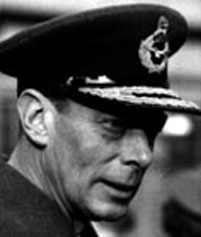George VI

King of Great Britain and Northern IrelandI have learned once again that it is in bad times that we value most highly the support and sympathy of our friends. On December 25, 1951, a frail King George VI, suffering from the effects of lung cancer, delivered his final Christmas address to the British Commonwealth. The second son of King George V, George studied at Dartmouth Naval College and served in the Royal Navy during World War I. He ascended to the throne on December 12, 1936, the day after King Edward VIII, his elder brother, abdicated. Edward, the first English monarch to voluntarily relinquish the throne, agreed to give up his title in the face of widespread criticism of his desire to marry Wallis Warfield Simpson, an American divorcee. In 1939, George became the first British monarch to visit America and Canada, and during World War II, he worked to keep up British morale by visiting bombed areas, inspecting war plants, and touring combat zones. In addition, George and his wife Elizabeth remained in bomb-damaged Buckingham Palace during the war and made a series of important morale-boosting radio broadcasts, for which George overcame a speech impediment. After the war, the royal family made a state visit and tour of South Africa, but a planned tour of Australia and New Zealand had to be postponed indefinitely when the king's health deteriorated in 1949. Despite his illness, George continued to perform state duties until his death on February 6, 1952. He was succeeded by his first-born daughter, who was crowned Queen Elizabeth II on June 2, 1953.

0 Comments:
Post a Comment
<< Home